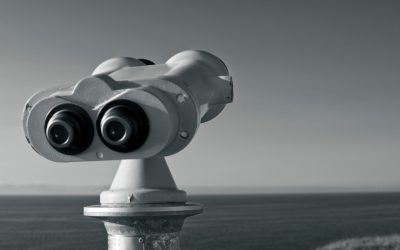What are the Basic Concepts of AI That Modern Leaders Should Understand and Why is it Important for Them to Stay Up to Speed, Even If They Are Not Technical? Estimated reading time: 8 minutes Understanding AI Fundamentals: Essential for informed decision-making. Key...
How Can Leaders Stimulate and Unlock the Innate Creativity of Employees and How Does This Relate to Company Culture
Estimated Reading Time: 6 minutes
- Understanding leadership styles that enhance creativity.
- The importance of trust and knowledge sharing.
- Cultivating intrinsic motivation in employees.
- The role of company culture in fostering creativity.
- Practical steps for HR professionals and leaders.
Table of Contents
- The Leadership Styles That Enhance Employee Creativity
- Facilitating Knowledge Sharing and Trust
- Supporting Intrinsic Motivation
- The Relationship Between Leadership and Company Culture
- Summary Table: Leadership, Creativity, and Culture
- Practical Takeaways for HR Professionals and Business Leaders
- Conclusion
- FAQ
The Leadership Styles That Enhance Employee Creativity
1. Servant Leadership
Servant leadership is one of the most effective styles in nurturing creativity. Servant leaders focus on the growth and well-being of their team members, fostering an environment where employees feel valued and encouraged to share their ideas. When leaders prioritize open communication and knowledge sharing, the result is an atmosphere where innovative thinking flourishes. Research shows that servant leadership effectively encourages employees to think more innovatively and channel their ideas into actionable solutions.
2. Transformational Leadership
Transformational leaders inspire their teams by engendering a sense of purpose and driving intellectual stimulation. This leadership style not only motivates employees but also enhances their creative capacities, particularly for those who are intrinsically motivated. By nurturing a culture where employees feel encouraged to take intellectual risks, transformational leaders pave the way for groundbreaking ideas and solutions.
3. Empowering Leadership
Empowering leadership is fundamental in cultivating the intrinsic motivation of employees, which is a crucial driver of creativity. When employees feel empowered and trusted to take initiative, they are more likely to propose innovative solutions. This autonomy fosters a greater creative output and enhances the overall effectiveness of teams.
Facilitating Knowledge Sharing and Trust
The environment surrounding creativity is equally important as the leadership styles applied. Leaders who actively promote knowledge sharing and establish trust within teams are instrumental in fostering innovation. When employees feel comfortable sharing ideas and collaborating, the potential for creative solutions increases significantly. Trust in leadership is essential; employees who trust their leaders are more likely to engage in open dialogue, leading to innovative thinking and creative outcomes.
Supporting Intrinsic Motivation
Recognizing and leveraging employees’ intrinsic motivation is key to stimulating creativity. When leaders acknowledge their team members’ internal desires to learn and explore, they can channel that energy into creative endeavors. Transformational and empowering leadership styles are particularly effective in this regard, as they nurture the intrinsic motivations of employees and align them with the organization’s objectives.
The Relationship Between Leadership and Company Culture
Culture as the Foundation for Creativity
Company culture acts as a vital foundation for fostering creativity. Leadership behavior not only shapes but is also shaped by the existing culture within an organization. A culture that values creativity, collaboration, and openness reinforces the positive impacts of creative leadership styles. When leaders model creative thinking and encourage risk-taking, such behaviors can become cultural norms, thus embedding creativity in the organization’s DNA.
The Feedback Loop Between Leadership and Culture
As leaders stimulate creativity, employees feel empowered to innovate, which in turn reinforces a culture of creativity. This positive feedback loop strengthens the organization’s innovative capabilities over time. By creating an environment where creativity thrives, organizations can ensure long-term viability and adaptiveness in a competitive landscape.
Organizational Support and Perceived Value
An important aspect of stimulating creativity is how employees perceive organizational support for creative efforts. When they recognize that the organization values and nurtures creativity through leadership actions and cultural signals, they are more likely to express unconventional ideas without fear of negative repercussions. This supportive framework catalyzes a culture that embraces creative risks and innovation.
Summary Table: Leadership, Creativity, and Culture
| Leadership Practice | Effect on Creativity | Cultural Impact |
|---|---|---|
| Servant Leadership | Encourages idea sharing, knowledge exchange, and creative solution-building | Fosters collective support and open communication |
| Transformational Leadership | Inspires, motivates, and intellectually stimulates; drives creative output—especially for intrinsically motivated employees | Builds a culture of inspiration and continuous improvement |
| Empowering Leadership | Boosts intrinsic motivation and initiative, leading to higher creativity | Creates a culture of trust and autonomy |
| Trust & Knowledge Sharing | Promotes innovative thinking and collaborative creativity | Establishes norms of collaboration and psychological safety |
Practical Takeaways for HR Professionals and Business Leaders
To unlock the creative potential of your teams, consider the following actionable steps:
- Adopt Leadership Styles That Nurture Creativity: Embrace servant, transformational, and empowering leadership styles to create an environment where creativity can thrive.
- Encourage Knowledge Sharing: Create platforms and opportunities for team members to exchange ideas freely. This could be through regular brainstorming sessions, workshops, or collaborative projects.
- Cultivate a Trust-Based Culture: Foster an organizational culture based on trust, where employees feel safe to express their ideas, take risks, and learn from failures.
- Recognize and Leverage Intrinsic Motivation: Acknowledge and support employees in their creative pursuits, aligning personal interests with organizational goals.
- Model Creative Thinking: As leaders, demonstrate the behaviors you wish to see. Encourage risk-taking and support your teams in their creative endeavors.
Conclusion
In summary, leaders can unlocking employee creativity and stimulate the innate creativity of employees by cultivating trust, encouraging knowledge sharing, and empowering team members. These practices become even more impactful when integrated into an organizational culture that values creative exploration. By establishing a supportive environment, companies can ignite a self-reinforcing cycle of creativity and innovation that enhances their competitive edge and overall success.
If you are looking to transcend your organization’s innovation capabilities and transform your company culture, reach out to us at Inspire Limitless. Let’s discuss how we can help you foster a culture of creativity and collaboration. You can contact me, Marc Mekki, at marc@inspirelimitless.com or call me directly at +971 58 526 7209. Together, let’s inspire limitless potential!
FAQ
- What is servant leadership? Servant leadership focuses on the growth and well-being of team members, fostering an environment where creativity can thrive.
- How does company culture affect creativity? A culture that values creativity and collaboration enhances the positive impacts of leadership styles that encourage innovative thinking.
- Why is trust important in leadership? Trust fosters open dialogue and collaboration, leading to greater innovation and creativity among employees.








